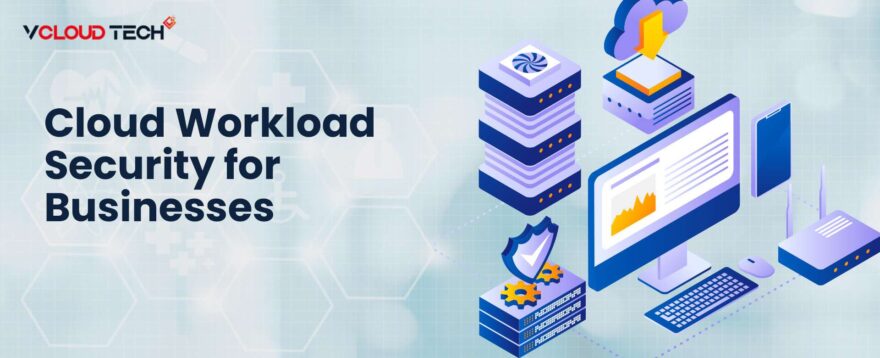The release of VMware vSphere 8
The corporate workload platform, VMware vSphere 8, gives on-premises workloads access to the advantages of the cloud. With the recent release of VMware vSphere 8, on-premises workloads are improved with cloud-like capabilities, fully integrated Kubernetes runtime, and performance-improving DPUs. It boosts operational effectiveness with DPU and GPU-based acceleration, interacts smoothly with add-on hybrid cloud services, and speeds up innovation with an enterprise-ready integrated Kubernetes runtime that runs containers alongside virtual machines. Organizations are starting to write a new chapter in the multi-cloud age as they embrace the cloud. Multi-cloud deployment has swiftly taken over as the preferred option. A Research survey found that 75% of all businesses had multi-cloud footprints. Many companies decide to operate mission-critical workloads locally to benefit from data proximity, consistent workload performance, and minimal network latency. The organization tends to draw more local services and applications as more significant masses of data are assembled to reduce latency, boost throughput, and optimize workload performance. Through the VMware vSphere Distributed Services Engine, vSphere 8 attendants in a new age of heterogeneous computing by delivering Data Processing Units to Enterprises. The subsequent development in cloud architecture for contemporary applications is the vSphere Distributed Services Engine, which divides responsibility for managing infrastructure services between the CPU and the DPU.
Modernizing cloud infrastructure into a distributed architecture made possible by DPUs, the vSphere Distributed Services Engine:
- Accelerate networking functions to meet modern distributed applications’ throughput and latency demands.
- Deliver the greatest infrastructure price-performance by giving workloads additional CPU resources
- With integrated vSphere processes, DPU lifecycle management operational overhead may be decreased.
- Distributed Services for vSphere Customers’ accustomed Day-0, Day-1, and Day-2 vSphere experiences are preserved by Engine. It may be used with various DPUs from top silicon suppliers (NVIDIA and AMD) and OEM server designs (Dell, HPE).
With more services to come, Distributed Services Engine offloads and accelerates NSX Networking and vSphere Distributed Switch on the DPU. Customers using in-memory databases or other applications that need a lot of network bandwidth and quick cache access will immediately profit from this.
Preferences for consumption models are changing:
According to IDC, 60% of businesses would use OpEx expenditures to support initiatives by 2025. The continued use of cloud-based consumption models for infrastructure services by IT firms indicates this trend. Based on specific requirements, lines of business are increasingly making their own decisions on infrastructure and services. Enterprises are embracing software-as-a-service as a critical tactic to save time and accomplish objectives more quickly. Gartner anticipates that global SaaS expenditure will surpass $208 billion by 2023.
New Features of vSphere 8:
- Workload Availability Zones: This functionality allows workloads distributed across Tanzu Kubernetes clusters, supervisor clusters, and vSphere clusters to boost availability. Using this functionality, the worker nodes are kept apart from one other inside a single vSphere cluster. Your vSphere namespace will transcend availability zones to accommodate the workloads that may be deployed across zones as you are no longer restricted to a single vSphere cluster. There must be a minimum of three availability zones for vSphere 8.0 GA. If you have zones set up, you may pick from the workflow availability zone option during the workload management activation, or you can deploy using the prior cluster-based option. The vSphere cluster will be connected one-to-one, although VMware plans to increase this in the next version.
- Cluster Class: An open-source project for a cluster API that specifies cluster requirements and pre-installed software. By abstracting away the actual workings and complexity of a Kubernetes cluster, you can design the structure of your collection once and reuse it several times. Cluster Class offers a declarative method for specifying the installed default packages and the Tanzu Kubernetes cluster settings. The platform team might choose the infrastructure packages deployed upon cluster construction. This might include the networking, storage, or cloud service providers, as well as the metric gathering and authentication system. The Cluster Class is mentioned in the cluster specification.
- Pinniped Integration: reaches the Tanzu Kubernetes clusters and supervisor clusters. Pinniped supports federated authentication using LDAP and OIDC. Identity providers that may be used to authenticate users to Tanzu Kubernetes and supervisor clusters can be defined. Without vCenter Single Sign-On, the supervisor cluster and Tanzu Kubernetes clusters may have direct OIDC access to an Identity Provider (IDP) via Pinniped integration. Pinniped pods are automatically installed in the Supervisor and Tanzu Kubernetes clusters to aid with the integration.
Infrastructure services are in more demand:
Modern workloads are becoming more sophisticated and numerous, driving demand for infrastructure services that provide these workloads with their essential underpinning functionality. CPUs are under higher stress due to the rising demand for software-defined infrastructure services, leaving fewer compute cycles available for workloads. Hyperscale organizations have deployed newer hardware accelerators, such as Data Processing Units (DPUs, also known as SmartNICs), to offload and accelerate infrastructure activities, freeing up CPU resources for workload execution. There are more hardware options from suppliers with a broader range of capabilities as DPUs become more prevalent in infrastructure. The issue for IT infrastructure teams is abstracting hardware variations and providing consumers with a consistent consumer experience.
Traditional methods to address the demands of next-generation infrastructure are ineffective:
A higher total cost of ownership occurs from growing server capacity to fulfil the rising demand for infrastructure. To operate typical IT workloads, application-specific silos, such as GPU-based servers for AI/ML workloads, do not scale well. As a consequence, the design becomes rigid, which increases operational complexity. Recent low-level security attacks show that the CPU complex becomes a single point of failure in a converged area where workloads coexist with infrastructure services. And on top of all that, IT companies must provide consistent infrastructure consumption experiences across several clouds so that high-performance applications may be developed, deployed, and maintained safely and securely.
Enhance Operational Efficiency:
Infrastructure maintenance and improvement take up a lot of IT administrators’ time. While routine maintenance procedures take time away from operating business-critical systems, they help assure uptime and availability by pre-staging ESXi image downloads and running concurrent upgrades on hosts; vSphere 8 streamlines maintenance periods and enables teams to resume normal operations quickly. Initial placement and migration are crucial components that aid infrastructure teams in maximizing service availability, balancing usage, and reducing downtime as workloads on-premises and at the edge increase. The vSphere Distributed Resource Scheduler and vMotion both significantly boosted in vSphere 8. Workload memory use is now considered when allocating resources via the Distributed Resources Scheduler. Considering the workloads’ memory requirements, it can position tasks more effectively. VMS is operating on hosts that enable Intel Scalable I/O Virtualization and may now be moved using vMotion (Intel SIOV). Now, workloads on the vSphere infrastructure may benefit from simultaneous SIOV passthrough performance and mobility. By 2022, 65% of the global GDP will be digital, according to an IDC report. According to the IDC analysis, the Global Data vSphere is anticipated to grow twofold between 2022 and 2026. As computing’s environmental impact increases, more businesses are considering environmentally friendly methods to run their infrastructure. VMware has already made the first move to assist businesses in creating sustainable computing strategies. Green Metrics, new to vSphere 8, allows you to monitor the amount of power used by workloads and infrastructure processes. Helping consumers understand the possibilities and opportunities to lower their carbon footprint while achieving business goals is simply the first step in that process.









